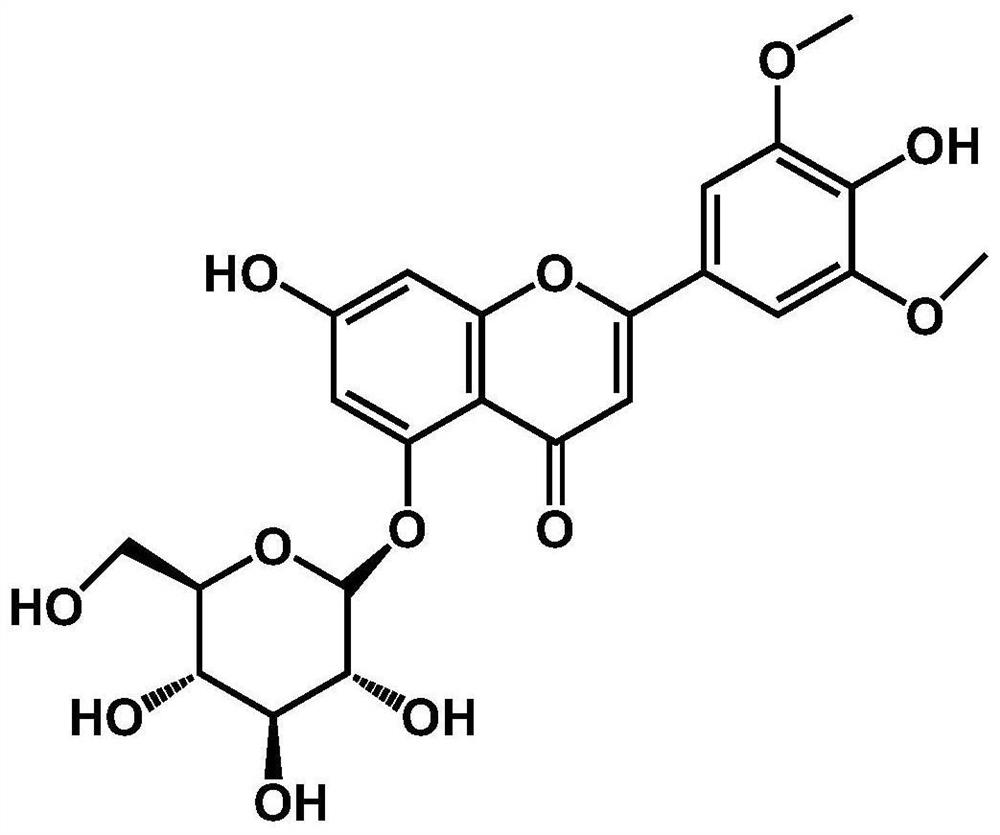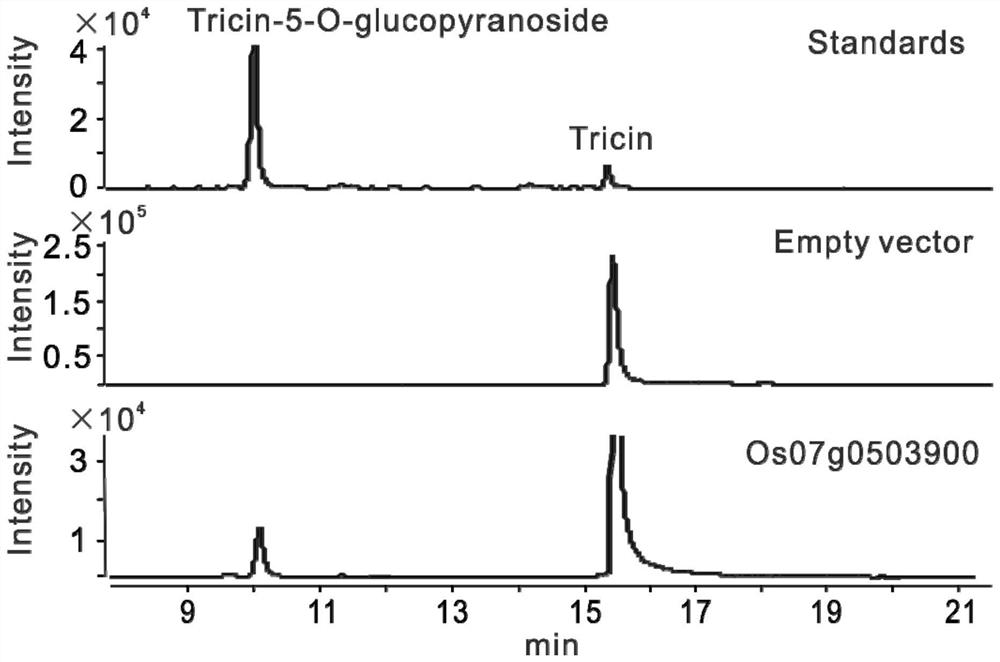Application of os07g0503900 protein in regulating plant resistance to weeds
A protein and plant technology, applied in the application field of Os07g0503900 protein in regulating plant resistance to weeds, can solve problems such as genetic mechanism and weed suppression mechanism are not very clear
- Summary
- Abstract
- Description
- Claims
- Application Information
AI Technical Summary
Problems solved by technology
Method used
Image
Examples
Embodiment 1
[0071] Example 1. Compound purification
[0072] (1) Collect the fresh leaves of rice (indica) about 60 days after sowing, and grind them into powder after drying with a freeze dryer. 8 times the volume of 75% ethanol was added, and ultrasonic extraction was performed three times for 20 min each time.
[0073] (2) Filter the extract, and use a rotary evaporator to concentrate it until there is no alcohol smell, and sequentially add equal volumes of petroleum ether, dichloromethane, and n-butanol to extract 3 times respectively.
[0074] (3) After concentrating the n-butanol phase obtained with a rotary evaporator, a medium and low pressure rapid preparation liquid chromatograph (Biotage Isolera TM Prime) using wet loading for coarse fractionation. The silica gel column packing is YMC*GEL C18 spherical packing with a particle size of 50 μm and a pore size of 12 nm. The weight of the filler used in this example is 100 g. The mobile phase is water (containing 0.1% formic aci...
Embodiment 2
[0080] Example 2, Os07g0503900 gene cloning
[0081] (1) The genomic DNA of the leaves of the japonica rice Zhonghua 11 (Oryza sativa L.ssp.japonica cv.Zhonghua11, ZH11) at the seedling stage was extracted.
[0082] (2) According to the existing Os07g0503900 sequence information on the Rice Genome Annotation Project, primers F1 / R1 containing BamHI and HindШ were used to amplify the CDS sequence of the Os07g0503900 gene containing the restriction site with the ZH11 genomic DNA as the template.
[0083] Primer F1: 5'-ggatccATGGCTCCAGCGATGGCGAG-3';
[0084] Primer R1: 5'-aagcttCTATATGGATGACATGTGGGC-3'.
[0085] (2) ligating the obtained gene fragment to pEASY-T 3 Vector (TransGen Biotech, -T3Cloning Kit), transformed Escherichia coli DH5α competent cells, and screened positive clones using blue-white spots.
[0086] (3) The positive clones were identified by PCR using primers F2 / R2, and the amplified fragment size was 310bp as positive clones. The primers are as follows:
...
Embodiment 3
[0091] Embodiment 3, the application of Os07g0503900 gene
[0092] 1. Construction of prokaryotic expression vector
[0093] (1) The recombinant vector pEASY-T obtained in Example 2 was transformed with restriction enzymes BamHI and HindШ 3 -Os07g0503900 was completely digested, and the expression vector pMAL-c2X (Hua Yue Yang, VECT-570) was digested simultaneously. The digestion system was: 5 μg plasmid, 2.5 μL 10× digestion buffer, 2 μL BamHI, 2 μL HindШ, plus ddH 2 O replenish the reaction system to 50 μL. The restriction enzyme digestion reaction conditions were: 37°C for 4 hours.
[0094] (2) Separate the digested products by agarose electrophoresis, and recover a fragment of about 1.5Kb containing Os07g0503900 and a pMAL-c2X vector fragment of about 6.6Kb, respectively, and dissolved in 30 μL of ddH 2 O in.
[0095] (3) ligating the gene fragment obtained in step (2) with the vector backbone fragment. The ligation reaction system is: 1 μL 10× ligase buffer, 0.5 μL ...
PUM
| Property | Measurement | Unit |
|---|---|---|
| particle diameter | aaaaa | aaaaa |
| pore size | aaaaa | aaaaa |
Abstract
Description
Claims
Application Information
 Login to View More
Login to View More - R&D
- Intellectual Property
- Life Sciences
- Materials
- Tech Scout
- Unparalleled Data Quality
- Higher Quality Content
- 60% Fewer Hallucinations
Browse by: Latest US Patents, China's latest patents, Technical Efficacy Thesaurus, Application Domain, Technology Topic, Popular Technical Reports.
© 2025 PatSnap. All rights reserved.Legal|Privacy policy|Modern Slavery Act Transparency Statement|Sitemap|About US| Contact US: help@patsnap.com



